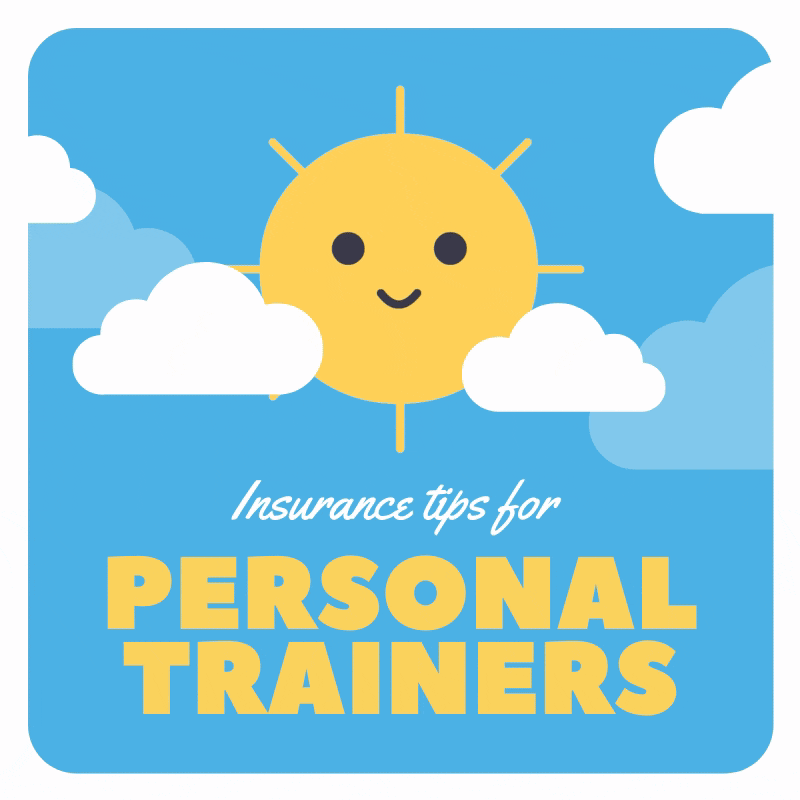Let’s start today’s blog with an anecdote about a new gym owner who contacted KBD for personal trainer insurance a few weeks back.
And for the sake of privacy, we’ll refer to this gym owner as “Steve.”
Steve called KBD after visiting the liability insurance for gym owners page to inquire about commercial insurance for his business that was opening in Quebec.
All of his workout equipment was already purchased and he would be renting a commercial space, paid monthly to the landlord.
The first question Steve inquired about was why his landlord was requiring the gym business to carry commercial general liability in the amount of $2,000,000.
“Why does my landlord care about whether I carry insurance or not?” he asked.
Commercial general liability insurance (or CGL insurance for short) covers your business if it causes damage to other people’s stuff.

And you’re probably asking yourself the question “hold up…as a gym owner, isn’t liability insurance designed to protect me from lawsuits if I’m accused of injuring a client while training them?”
Yes… and no.
We’ll get to all that and more as we explore the reasons why business insurance is important for gym owners like Steve and personal trainers located within the province of Quebec.
What is gym insurance and what does it cover?
Getting back to the example about our buddy Steve…
The property owner’s only concern is potential damage done to their building while you’re the commercial tenant.
And this is exactly what CGL insurance covers.
To be more specific, commercial general liability insurance protects your business if it causes third-party property damage or bodily injury.
So, to make sure we’re on the same page, if your gym or a client in your gym accidentally causes damage to the landlord’s building — a hole in the wall, a shattered light fixture — you would most likely be held responsible to pay for the repairs, which you could do by making a commercial general liability insurance claim.

Professional liability insurance, on the other hand, is the type of insurance that protects your business if a client injures themselves during a workout while under the supervision of a trainer (a trainer who is your employee).
(A little FYI, professional liability insurance can also be referred to as “errors and omissions” insurance)
As with all other professional liability insurance products, this protection is designed to cover a mistake made while providing your service.
Let’s take an easy example from a different industry:
As an insurance broker, KBD has a professional liability insurance policy that protects the company if we make a mistake advising a client or forget to add on a necessary protection, and the client suffers financial harm (they aren’t covered when they thought they were).
The reason why a personal trainer needs professional liability is because a client injuring themselves would most likely be caused by a trainer making a mistake while providing their professional service.
Example: You made a client do one too many biceps curls, resulting in a torn muscle.
In this example, you aren’t directly causing damage to the client (which is covered by CGL); the torn bicep is a result of bad training guidance.
Commercial property insurance covers your contents, stock & equipment against perils like fire, water, theft and vandalism.

Personal trainer insurance tips
Tip #1 – After looking at the two types of insurance coverage available for your gym, it’s important that your personal trainer insurance policy includes both commercial general liability insurance and professional liability insurance.

Why?
In the event of a claim where a client injures themselves, it’s very possible that the injury will occur in what we call “the grey area.”
In other words, there could be some debate as to whether it’s considered a CGL claim or a professional liability claim.
Did the client injure themselves as a result of bad guidance on behalf of the personal trainer (professional liability insurance claim)?
Or was the injury caused by a slippery floor that should have been dry (CGL insurance claim)?
Purchasing both types of personal trainer liability insurance policies will guarantee coverage if a client injures themselves while working out on the premises.
Another important point to note on this subject: purchase these 2 protections from the same insurance company.
A claim in “the grey area” means there could be a debate if the incident should be considered a CGL claim or a professional liability claim.
In other words, company A could argue that it’s a CGL claim and Company B could argue it’s professional liability claim.
The result of this would be a much slower claim settlement for your business.
Tip #2 – If you offer online courses, make sure that your insurance broker is aware!
Certain underwriters are prudent with this type of risk because viewers/clients can be located in different geographic regions, and in particular, the USA.
When clients are located in the USA, your chance of being sued increases.
Offering online courses does not mean your business is “uninsurable.”
It just means the insurance company may need to charge a higher rate that reflects the new liability exposure.
Tip #3 – If your business is new and you’re looking to cut personal trainer insurance costs, make sure your trainers/employees carry their own insurance coverage!
The logic here is that if one of your trainers injures a client and is deemed responsible, it will be their individual insurance policy used to cover the claim, and not yours.
You’d avoid making a claim on your policy and the increase in price that comes along with making that claim, which would help keep costs down.
Tip #4 – Unfortunately, KBD Insurance only offers insurance to Quebec based businesses (for now).
If you’re located in Manitoba, I suggest checking out MIG Insurance and their fitness and personal trainer insurance products.
Why do I need personal trainer insurance?

Having gone through a few examples above, the #1 reason why personal trainer liability insurance is important to have is to protect you and your business in the event of a lawsuit.
An insurance policy that includes professional liability as well as commercial general liability insurance coverage will ensure that your business does not pay for defense costs out of pocket.
As the Institute of Personal Trainers explains, getting sued is a pretty serious topic, especially if you’re a sole trader.
If we were to simplify the two types of fitness liability insurance, it would look something like this:
CGL insurance – coverage for causing direct damage to someone else’s property.
Professional liability – coverage if a client injures themselves during a workout as a result of your service.
How much does personal trainer insurance cost?

If you’re a sole operator, an insurance policy at KBD will cost you $850 / year for both professional and CGL insurance combined.
It’s important to keep in mind that this insurance provides coverage for yourself only, not personal trainer employees who work on your behalf.
If you’re a gym owner with trainers working as employees, you can expect to pay anywhere between $1,000 – $3,000 per year, depending on the value of the contents your business owns.
Conclusion
In today’s blog we ran through why it’s important as a personal trainer or gym to include professional liability insurance as well as CGL insurance in your insurance policy, and why these protections should be covered by the same insurance company.
Here are the key takeaways from this post:
– Professional liability protects you in the event you accidentally injure a client while they’re working out as a result of poor training guidance (your service).
– Commercial general liability protects against third party property damage or bodily injury (if you cause direct damage).
– It’s important to mention to your insurance broker if you’re offering online fitness classes.
– Gym owners should consider requiring their personal trainers to carry their own individual fitness liability insurance as it will decrease your insurance cost as well as lower your liability exposure.


